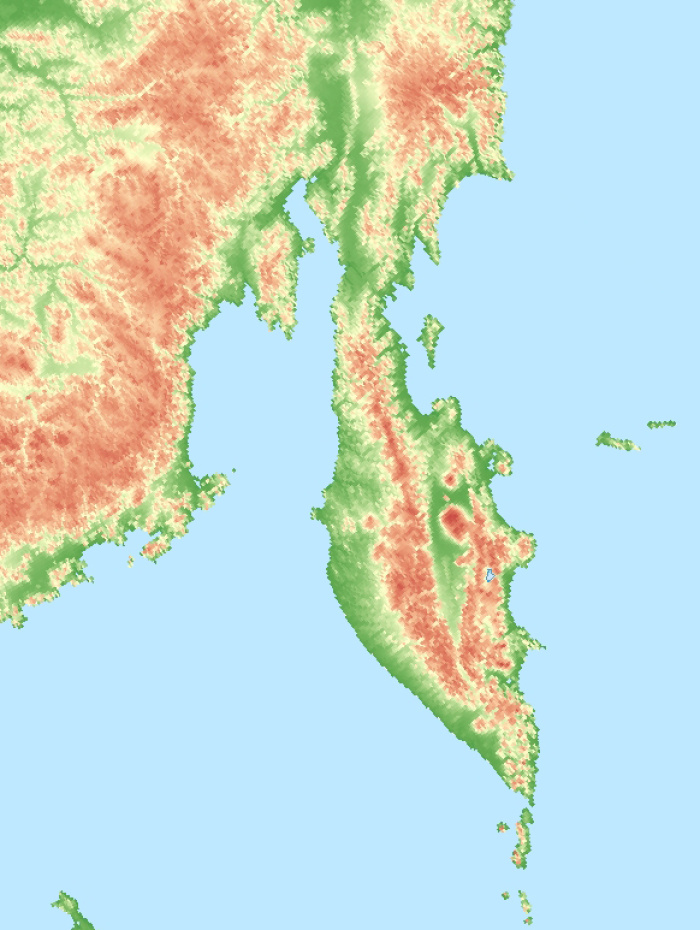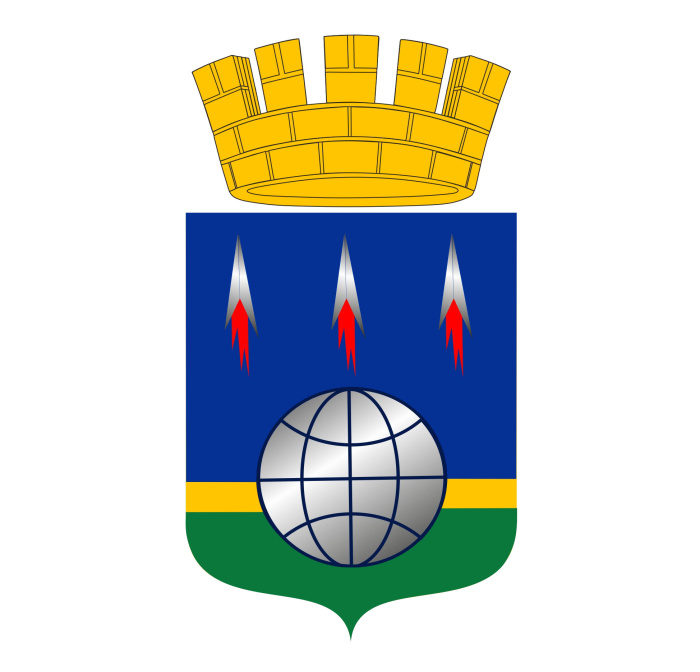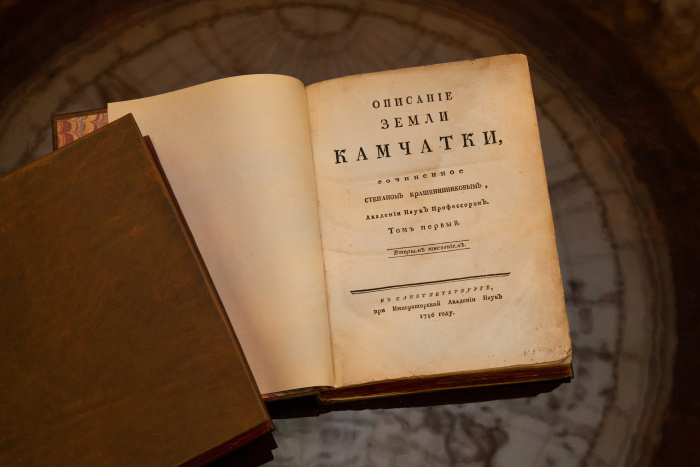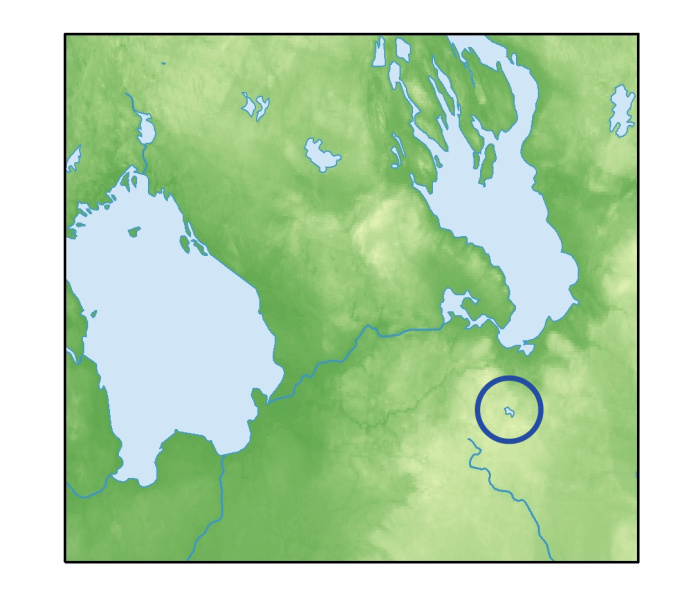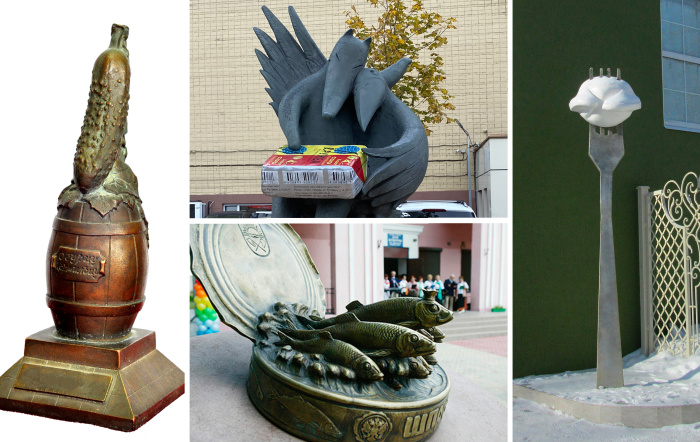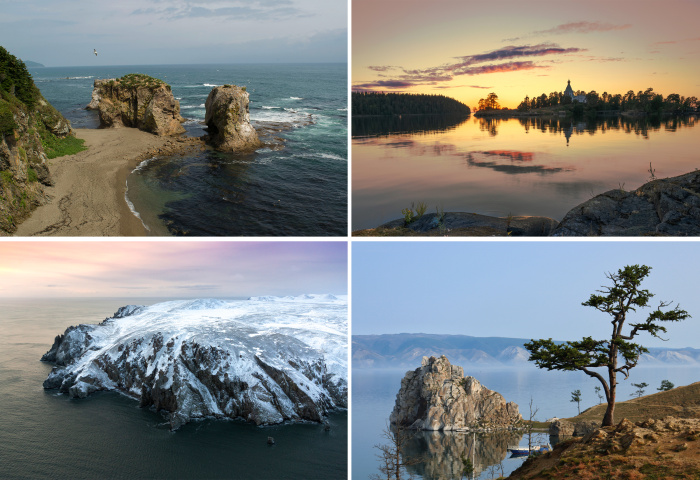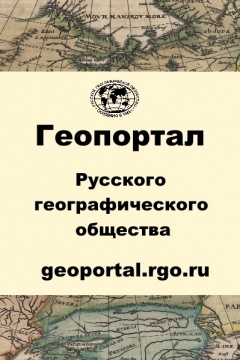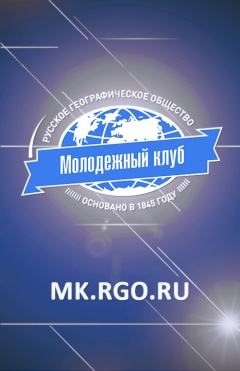PART 1
Photo: Alexander Kozintsev
1. The secretary of the expedition of Vice-Admiral Evfimy Vasilyevich Putyatin in 1852-1854 was the writer Ivan Andreevich Goncharov. In his famous novel "The Frigate 'Pallada'", based on the travel notes of the expedition, he writes: "An hour later the sun shone as before, illuminating the dense and motionless area of the ocean to the very ___." What word, which has gone beyond the limits of strictly scientific terminology and in Greek meaning "limiting", is missing in the quotation?
A) Meridian; B) Equator; C) Horizon; D) Latitude.
Answer: C) Horizon
Reproduction of the painting by V.Polenov "Grandma's Garden"
The author of the question: Bashilova Anna
2. In the famous painting by Vasily Dmitrievich Polenov, a real mansion is captured surrounded by an overgrown garden. Prince Georgy Evgenyevich Lvov, who lived in this house, testified in his memoirs: "The house of Mrs Yuryeva, then Baumgarten, was immortalized by Polenov ... in his painting 'Grandmother’s Garden'." The whole city was built up with such typical noble buildings after the fire of 1812. What city is this mansion situated in?
A) St. Petersburg; B) Moscow; C) Voronezh; D) Smolensk.
Answer: B) Moscow
3. The map depicts one of the largest peninsulas of the Russian Federation. A notable feature of these places is intense volcanism, as well as areas of hydrothermal phenomena. Choose the described peninsula from the list:
A) The Taymyr Peninsula;
B) The Kerch Peninsula;
C) The Kanin Peninsula;
D) The Kamchatka Peninsula.
Answer: D) The Kamchatka Peninsula
Photo: Sergey Plakhov
The author of the question: Ustuokov Gleb
4. The world longest trolleybus line located in the mountains is situated in Russia. Where?
A) The Republic of Altai;
B) The Republic of Crimea;
C) The Ivanovo Region;
D) Yamal-Nenets Autonomous Area.
Answer: B) The Republic of Crimea
The author of the question: Zaichenko Elina
5. The State Museum of the History of Cosmonautics in Kaluga, a crater on the Moon and a small planet, as well as a city built near the Vostochny cosmodrome are named after Konstantin Eduardovich Tsiolkovsky. In what region of Russia is this city situated (its coat of arms is shown in the image)?
A) The Amur Region;
B) The Murmansk Region;
C) Arkhangelsk Region;
D) The Trans-Baikal Territory.
Answer: A) The Amur Region
Photo: Svetlana Gorbatykh
6. Among the peoples of the Polar Urals, Siberia and the Far East, these sledges serve not only to move around the winter tundra, but also to store clothes. In them, the indigenous peoples of the North harness deer or dogs. What is the name of such sledges?
A) Salazki; B) Drovni; C) Narty; D) Chunki.
Answer: C) Narty
Photo: Alla Dzioeva
The author of the question: Kuduhtu Alana
7. This river, sung by many Russian poets, in particular Alexander Sergeevich Pushkin and Mikhail Yurievich Lermontov, originates in Georgia, flows through the territory of North Ossetia, Kabardino-Balkaria, Stavropol Territory, Chechnya and Dagestan. The hydrographic network of the delta of this river is changeable: after the breaks of the channel shafts or protective dams, floods occur, as a result of which lakes and swamps form, and new branches appear. Name the described river.
A) The Don; B) The Argun; C) The Terek; D) The Kuma.
Answer: C) The Terek
Photo: Valentin Zhiganov
The author of the question: Viatkin Pavel
8. For most people, Lapland is associated with the fabulous land in the north of Scandinavia, the birthplace of Santa Claus and the aurora. However, this is a very real cultural and ethnic region, inhabited mainly by the Sami and located on the territory of four states - Norway, Sweden, Finland and Russia. Moreover, one of the largest cities in this cultural and ethnic region is located in our country. What city are we talking about?
A) Murmansk; B) St. Petersburg; C) Arkhangelsk; D) Petrozavodsk.
Answer: A) Murmansk
Photo: Anna Yurgenson
9. "... there was a terrible shaking of earth with an extraordinary flood ... Meanwhile, a terrible noise and excitement arose on the sea, and suddenly it surged onto the banks of the water three sazhens high, which, without standing, ran into the sea and moved away from the coast to a notable distance. At that time, stone mountains were seen in the strait at the bottom of the sea between the first and second Kuril Islands, which had never been seen before, although quakes and flooding had happened before." What dangerous natural phenomenon is described by the geographer and traveler Stepan Krasheninnikov?
A) Typhoon; B) Tsunami; C) Tornado; D) Hurricane.
Answer: B) Tsunami
Photo: Radomir Tarasov
10. Which ancient city, which is the westernmost city in Russia, saw German knights, Swedes, Poles, French, Russian soldiers of Empress Elizabeth, witnessed the Great Embassy of Tsar Peter I and the events of the Great Patriotic War?
A) Baltiysk; B) Smolensk; ; C) Pskov; D) Staraya Russa.
Answer: A) Baltiysk
PART 2
1. In the Vologda region there is a small lake - Shimozero. According to the stories of old-timers, since ancient times the lake had magical properties: the water either left or appeared from it. The local Vepsians combined paganism and Orthodoxy in their everyday worldview, and when the lake "left" them, they went to the temple for confession, believing that after the forgiveness of their sins, their breadwinner, the lake, would return. And so it happened: after some time the lake was filled with water and fish, and the processes of outflow and inflow of water were accompanied by a loud noise. Now this fact is scientifically explained. Determine what type of lake Shimozero belongs to.
A) Tectonic lake; B) Karst lake; C) Oxbow lake; D) Volcanic lake.
Answer: B) Karst lake
The author of the question: Sidorova Yulia
2. Match the names of Russian cities with the monuments that are located in these settlements:
1) cucumber; 2) cheese "Druzhba" ("friendship"); 3) sprats; 4) pelmeni (dumplings).
A) Moscow; B) Izhevsk, the Udmurt Republic; C) Mamonovo, the Kaliningrad region; D) Lukhovitsy, the Moscow region.
A) 1A, 2C, 3B, 4D;
B) 1D, 2A, 3C, 4B;
C) 1B, 2D, 3A, 4С;
D) 1C, 2B, 3D, 4A.
Answer: B) 1D, 2A, 3C, 4B
Photo: wikipedia.org/Alexander Osipenko, Alexandra Skobeleva, wikipedia.org, wikipedia.org
3. The largest island in this archipelago bears the name of the discoverer Vitus Bering. Today the archipelago is one of the largest reserves of marine mammals: whales, killer whales, fur seals. Select from the list the name of the archipelago located in the southwestern part of the Bering Sea.
A) The New Siberian Islands;
B) The Komandorski Islands;
C) The Solovetsky Islands;
D) The Kuril Islands.
Answer: B) The Komandorski Islands
Photo: Vladislav Ionis
The author of the question: Pavlova Alexandra
4. In Russia citizens communicate in the same language, and it is impossible that people from the north and south do not understand each other. However, it happens that two people call the same thing completely differently: in Moscow they say "entrance", whilst in St. Petersburg it is called "front door". Which federal district is characterized by the following regionalisms: "multifora", "victoria", "okolotok", "tolchyonka", "pimy"?
A) The Far Eastern Federal District;
B) The Siberian Federal District;
C) The Volga Federal District;
D) The Southern Federal District.
Answer: B) The Siberian Federal District
Photo: Victor Konev
The author of the question: Trapezova Olga
5. These birds live in the Northern Hemisphere, mainly in the taiga, and are well adapted to the lowest temperatures. The unique structure of the beak allows them to extract seeds from the cones of coniferous trees, which are the main food for adult birds and chicks. Their distinctive feature is associated with the maturation of spruce, pine and fir cones, - that is breeding offspring at the end of winter or early spring. Name these birds.
A) Eurasian jay; B) Spotted nutcracker; C) Crossbill; D) Sparrow.
Answer: C) Crossbill
Photo: Konstantin Baydin
The author of the question: Elash Kira
6. The Amur is the fourth river in Russia in terms of basin area and one of the ten rivers in the world in terms of length. It flows through the territory of three states: Mongolia, China and Russia. In Russia, there are five cities on its banks, and only one of them is on the right bank of the Amur. Which one?
A) Blagoveshchensk; B) Khabarovsk; C) Ulan-Ude; D) Vladivostok.
Answer: B) Khabarovsk
Photo: wikipedia.org
The author of the question: Pavlova Natalia
7. In the autumn of 1936, a parcel with unusual rock samples arrived in Arkhangelsk, at the Northern Geological Exploration Trust. The samples painted hands and have long been used in the village of Zhivoglyadovo on the Onega river for painting the walls of houses and wooden products. The workers asked the geologists to test rock samples and make a conclusion about their economic use. Thus, one of the largest deposits in Russia was discovered in the Plesetsk district of the Arkhangelsk region. What mineral are we talking about?
A) Diamonds; B) Bauxites; C) Nickel ores; D) Bituminous coal.
Answer: B) Bauxites
Photo: Alexei Shekhonin
The author of the question: Ipatov Alexander
8. The Russian paleontologist Vladimir Prokhorovich Amalitsky conducted excavations and research in this area. From the bowels of the earth, the bones of peculiar prehistoric terrestrial vertebrates, not only known, but also unknown to science of that time, were extracted. This became a sensation, because before paleontologists believed that such animals could not exist in the North. In memory of those events, the image of a dinosaur is placed on the modern coat of arms of the district. In what district of one of the regions of Russia did Amalitsky excavate?
A) The Kotlassky district of the Arkhangelsk Region;
B) The Palekh district of the Ivanovo Region;
C) The Michurinsky district of the Tambov Region;
D) The Taganrog district of the Rostov Region.
Answer: A) The Kotlassky district of the Arkhangelsk Region
Photo: Kirill Uyutnov
The author of the question: Solovyov Artyom
9. In 1848, a scientific expedition of the Russian Geographical Society led by Ernst Karlovich Hoffmann visited Pai-Khoi. Later, in the works based on the results of the expedition, this ridge received the following characteristic: "Pai-Khoi can be called a ridge, cut to the very bottom by many deep valleys, in which swamps and lakes were formed, covering the stone soil." What mountain system does the Pai-Khoi range belong to?
A) The Altai mountains;
B) The Crimean mountains;
C) Caucasian mountains;
D) Ural Mountains.
Answer: D) Ural Mountains
Photo: Alexei Kharitonov
The author of the question: Likhachev Kirill
10. For more than 10 km stretches a sandy massif with dunes 40–80 m high, which stands out sharply as a bright yellow spot among snow-covered rocky ridges, dense larch taiga, numerous lakes and hummocky swamps. Since 2018, this sandy object has been included in the Kodar National Park, located in a mountainous area that is part of the Stanovoy Upland system. What natural landmark of Russia is mentioned in the question?
A) The Curonian Spit, the Kaliningrad Region;
B) The Sarykum sand dune, the Republic of Dagestan;
C) The Chara Sands, the Trans-Baikal Territory;
D) Tukulan (sand dune) Saamys-Kumaga, the Republic of Sakha (Yakutia).
Answer: C) The Chara Sands, the Trans-Baikal Territory
Illustration: Scientific Library of the Russian Geographical Society/ Gustav-Theodor Pauli "Ethnographic description of the peoples of Russia"
The author of the question: Nikitina Olga
11. It is known that the majority of Turkic peoples are Muslims. However, there are Turkic peoples in Russia who mostly profess Christianity. In which list are the Christian Turks correctly indicated?
A) Chuvash and Bashkirs;
B) Yakuts and Tatars;
C) Kalmyks and Buryats;
D) Chuvash and Yakuts.
Answer: D) Chuvash and Yakuts
Photo: Dmitry Martynenko
12. This river - one of the largest tributaries of the Volga - inspired many domestic cultural figures, for example, the poet Sergey Alexandrovich Yesenin and the painter Vasily Dmitrievich Polenov. On its banks there is a large number of historical and cultural monuments and natural heritage sites. Determine the correct sequence of cities that the traveler will visit, moving along this river from source to mouth.
A) Kaluga - Ryazan - Murom - Nizhny Novgorod;
B) Tver - Murom - Kaluga - Ryazan;
C) Moscow - Kaluga - Ryazan - Nizhny Novgorod;
D) Kaluga - Ryazan - Yaroslavl - Nizhny Novgorod.
Answer: A) Kaluga - Ryazan - Murom - Nizhny Novgorod
Photo: wikipedia.org/Nadar
13. Famous scientists - the historian of Byzantine and ancient Russian art Nikodim Pavlovich Kondakov; chemist Nikolai Dmitrievich Zelinsky; geographer, laureate of the Konstantinovsky medal of the Russian Geographical Society Gavriil Ivanovich Tanfilyev - were professors of the university, which in the times of the Russian Empire was called Novorossiysk. Name the city where this university was located, now bearing the name of another of its great teachers - biologist, Nobel Prize winner Ilya Ilyich Mechnikov.
A) Novorossiysk; B) Odessa; C) Nikolayev; D) Kherson.
Answer: B) Odessa
Photo: Igor Sarapulov
14. The tradition of burning an effigy of Maslenitsa, which means the end of winter and the arrival of spring, is an easily recognizable component of Russian culture. In some southern villages, the rite "Seeing the Mermaid" was performed, which symbolized the end of spring and the onset of summer; the mermaid was coaxed with offerings to ensure a good harvest. In terms of territorial coverage, this rite is recognized mainly as South Russian. In what regions of Russia is it held?
A) The Omsk and Novosibirsk Regions;
B) The Voronezh and Tambov Regions;
C) The Arkhangelsk and Murmansk Regions;
D) The Leningrad and Novgorod Regions.
Answer: B) The Voronezh and Tambov Regions
Photo: Semyon Deyak
The author of the question: Bazyileva Alina
15. One of the seas washing the shores of Russia, the great Russian navigator Admiral Fyodor Petrovich Litke figuratively called the "ice cellar". The name of this sea comes from the name of the river that flows into it. The name of the river in translation from the Nenets means "hummocky ice". What is this sea?
A) The White Sea;
B) The Kara Sea;
C) The Black Sea;
D) The Baltic Sea.
Answer: B) The Kara Sea
Photo: Georgy Rozov
The authors of the idea of the question: Maria Borodina and Sergey Liutyi
16. The city of Rybinsk, founded in 1071, has changed its name several times over its long history. For example, in Soviet times, the city was repeatedly renamed - either naming it in honor of famous statesmen, or returning the name Rybinsk again. What name it has never had?
A) Ust-Sheksna; B) Chkalov; C) Shcherbakov; D) Andropov.
Answer: B) Chkalov
Photo: wikipedia.org
17. This ornamental purple mineral was discovered in the last century on the border of the Irkutsk region and Yakutia and named after a small river - a tributary of the Olekma. The discovered deposit is truly unique: not only industrial deposits, but even deposits containing single grains of this mineral have not been found in the world. Choose this mineral used in manufacturing jewelry, as well as vases, goblets, balls, caskets and other interior items.
A) Charoite; B) Turquoise; C) Cinnabar; D) Azurite.
Answer: A) Charoite
18. "Here everyone is so interested in everything of Little Russia," Nikolai Vasilyevich Gogol wrote to his mother shortly after his arrival in St. Petersburg, talking about the passion of Russian society for Little Russia in the first half of the 19th century. It is not surprising that one of the world-famous symbols of Russian culture was the romance "Black Eyes", first published in the Literary Gazette in 1843. What governorate of the Russian Empire was its author, Yevgeny Pavlovich Grebyonka, a native of?
A) The Poltava Governorate;
B) The Volhynian Governorate;
C) The Grodno Governorate;
D) The Voronezh Governorate.
Answer: A) The Poltava Governorate
Photo: Russian Geographical Society press service
19. Contemporaries called him "the most Russian of the Danes." He served as a midshipman, was an official for special assignments under the military governor of Orenburg, helped Alexander Sergeevich Pushkin prepare material for the "History of the Pugachev Riot", and became one of the founders of the Russian Geographical Society. For compiling the dictionary, he was awarded the gold Konstantinovsky medal, the highest award of the Imperial Russian Geographical Society. Who is this man?
A) Vasily Struve (Friedrich Georg Wilhelm von Struve);
B) Nikolai Yanovsky;
C) Vladimir Dal;
D) Wladimir Köppen.
Answer: C) Vladimir Dal
Photo: Evgeniy Fadin
The author of the question: Konovalov Denis
20. What city, located near the mouth of the Volkhov River, is associated with the calling of the Varangians to reign, which was described in the "Tale of Bygone Years" by the chronicler Nestor?
A) Veliky Novgorod;
B) Staraya Ladoga;
C) Volkhov;
D) St. Petersburg.
Answer: B) Staraya Ladoga
Photo: Ivan Fyodorov
The author of the question: Ivanchenko Tatyana
21. Due to the unique climate, unusual for these harsh regions, this city has been called "Siberian Italy" since the time of the exiled Decembrists. The climate of the hollow in which the city is located allows growing various fruit and berry crops. The city is famous throughout Siberia and even beyond its borders for delicious tomatoes that have been grown by local gardeners since the 19th century. Since 2004, every year in the last month of summer, the city hosts a holiday - Tomato Day. What city are we talking about?
A) Novokuznetsk; B) Gorno-Altaysk; C) Minusinsk; D) Irkutsk.
Answer: C) Minusinsk
Photo: Dmitry Kapin, Nikolai Konstantinov, Andrey Parshin, Marina Koshcheyeva
The author of the question: Lisina Anna
22. This island with about 500 different plant species is composed of rocks that are over 1.5 billion years old. Artists Mikhail Konstantinovich Klodt, Ivan Ivanovich Shishkin, Nikolai Konstantinovich Roerich and others admired his beauty and captured it in their paintings. Select an island from the list.
A) Sakhalin; B) Valaam; C) Vrangel Island; D) Olkhon Island.
Answer: B) Valaam
Photo: wikipedia.org/Constantine Kulikovsky
23. It was this city, at that time the largest of the Russian cities on the Black Sea coast, that repulsed the attack of the combined Anglo-French squadron, during which it was seriously injured. In honor of this landmark episode of the Crimean War, a Cannon Monument was erected on the Primorsky Boulevard of this city. What city are we talking about?
A) Petropavlovsk-Kamchatsky; B) Sochi; C) Kronshtadt; D) Odessa.
Answer: D) Odessa
24. The flag of the village of Ozyorny, the Ivanovo Region, depicts one of the types of the national economy that used to exist in this area. What business activity are we talking about?
A) Poultry farming; B) Peat development; C) Bricks making; D) House building.
Answer: B) Peat development
25. This city is one of the oldest in Russia, and its first mention is found in the "Tale of Bygone Years", which tells how in 903 the Kiev prince Igor was brought his wife "named Olga" from this city. At the confluence of the Velikaya River, which divides the city into two main parts, and the river of the same name to the city, there is the famous Kremlin, which can be seen both in the old plan and in the modern picture of the city. Select this city from the list:
A) Pskov; B) Veliky Ustyug; C) Perm; D) Yaroslavl.
Answer: A) Pskov
Photo: Sergey Kalyunin
26. Lake Ubsu-Nur is located in the reserve of the same name and is part of a UNESCO World Heritage Site, and the water in it is almost as salty as in the Black Sea. On the coast of the lake there are a large number of archaeological sites (mounds, petroglyphs of ancient nomads), but there are no modern settlements here. Ubsu-Nur is the largest lake in the territory of the country with which Russia borders. In which region of Russia is it also partially located?
A) The Pskov Region;
B) The Primorye Rerritory;
C) The Astrakhan Region;
D) The Republic of Tuva.
Answer: D) The Republic of Tuva
Photo: Artyom Mirny
27. The famous French writer Alexander Dumas, traveling around Russia, visited this city in 1858 and wrote about it: "The city with its oriental memories and Islam has nine hundred and eighty streets, ten bridges, four thousand three hundred houses, many churches, monasteries, ten mosques, two hotels for travelers, seven taverns, two taverns, fifty-two thousand two hundred and forty-four residents, of which fifteen thousand are Mohammedans." What city are we talking about?
A) Nizhny Novgorod; B) Kazan; C) Astrakhan; D) Derbent.
Answer: B) Kazan
Photo: Alyona Gazukina
28. It is in this official list that you can find the "Divine Hermit" (Osmoderma caeleste), the "Abrau tyulka" (Clupeonella abrau), and even "Rothschild's Somatrichia" (Somatrichia parasita rothschildi). Choose such a list.
A) Red Data Book of the Russian Federation;
B) State Catalog of Geographical Names;
C) Federal Information Address System;
D) Russian Maritime Register of Shipping.
Answer: A) Red Data Book of the Russian Federation
Photo: wikipedia.org/Artyom Belevich, Maria Ivanova, wikipedia.org
29. Landscapes and life of the peoples of our country at all times served as a source of inspiration for writers, painters and musicians. Many works of Russian culture were created in the places native
to their authors, the images of which are guessed in their creations. Match the listed artists with the regions that had a significant impact on their work:
1. Alexander Nikolaevich Ostrovsky; 2. Isaac Ilyich Levitan; 3. Mikhail Ivanovich Glinka; 4. Boris Leonidovich Pasternak.
A. Peredelkino (Moscow); B. Shchelykovo estate (the Kostroma region); C. Plyos (the Ivanovo region); D. City estate Novospasskoye (the Smolensk region).
A) 1B, 2C, 3D, 4A ;
B) 1B, 2C, 3A, 4D;
C) 1D, 2A, 3C, 4B;
D) 1C, 2A, 3B, 4D.
Answer: A) 1B, 2C, 3D, 4A
Photo: Lidiya Kokorina
30. This ancient Russian city, first mentioned in the "Tale of Bygone Years" under the year 862, is the birthplace of the famous epic hero. In addition, one of the pioneers of television, Vladimir Kuzmich Zworykin, was born here, and today, thanks to local saints, a new holiday has appeared - the Day of Family, Love and Fidelity. Name this city.
A) Ryazan; B) Vladimir; C) Rostov; D) Murom.
Answer: D) Murom




